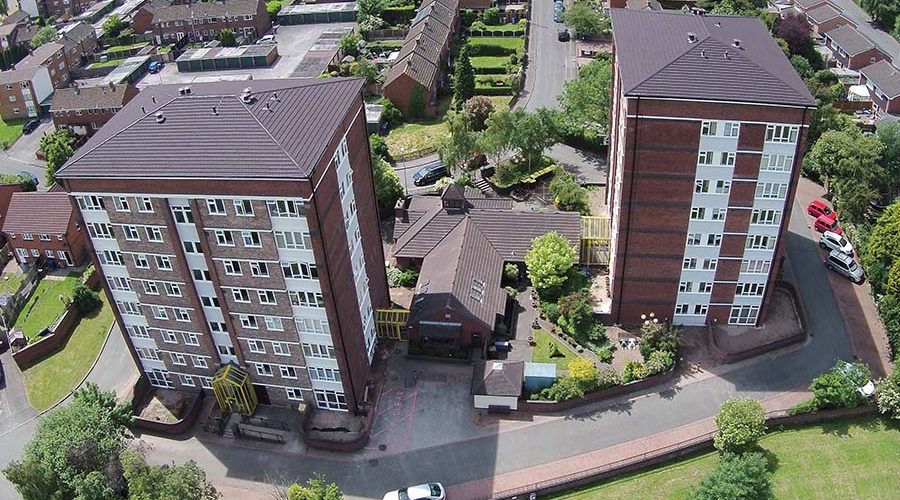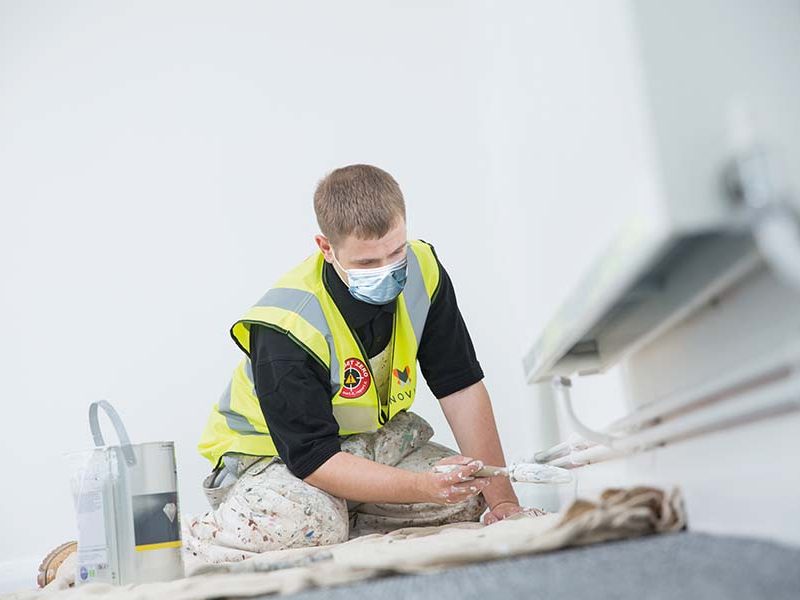In this article, Charlie Cooley, Head of Operations at contractor Novus Property Solutions, discusses the three Cs of putting the end-user first when it comes to carrying out public sector refurbishment projects: COVID-secure measures, compliance and communication.
Novus Property Solutions
As local authorities continue to invest in their property portfolios in order to increase standards and adapt to new regulations, the demand for refurbishment and retrofit projects remains high.
This year will continue to present its own unique set of challenges as we all adjust to the new ‘normal’, and these must be taken into consideration when it comes to carrying out work within the public sector. Arguably, this is even more vital for projects being undertaken within the social housing sector – with any refurbishment works having the potential to impact the day-to-day lives of residents.
And when it comes to carrying out refurbishment contracts, it goes without saying that client satisfaction should be one of the desired outcomes from start to finish. But it’s also essential that contractors don’t forget the end-user when planning projects – and this group should remain a priority before, during and after work has taken place.
COVID-secure measures
Even after COVID-19 restrictions have been gradually lifted, measures like social distancing are likely to remain in the public’s consciousness for some time yet. And because refurbishment works within social housing often involve spending time in people’s homes, contractors should take this into consideration when planning projects – even beyond June 2021.
Adhering to Government guidelines, such as social distancing and wearing a face mask indoors, has of course become standard practice across the construction sector, and such measures may be here to stay for some time.
But there are extra steps that can be taken in order to truly put the end-user first when it comes to implementing COVID-secure measures while carrying out refurbishment works in social housing.
For example, Novus recommends the use of respite pods where possible. These give residents a relatively comfortable space to spend time in while work is being carried out inside their home. Novus has used respite pods while carrying out refurbishment projects for some time as a way to go the extra mile for the end-user, but these have become even more useful since the start of the pandemic as they are ideal for encouraging space between residents and those carrying out work in houses.
Although taking such measures will mean a higher project cost, it is a worthwhile investment for local authorities in order to put the end-user first by giving social housing residents the option of using an alternative space while contractors are in their home if it makes them feel safer.
Compliance
Compliance has always been at the forefront of refurbishments and retrofits across the public sector – especially within social housing and high-rise flats in particular – and fire safety compliance has been subject to much recent scrutiny.
However, with cladding often being the current focus of discussions around fire safety, it can be easy to overlook other important measures which will protect residents – and those carrying out refurbishment works must consider varying regulations throughout the UK, with some of England and Wales’ regulations differing from those in Scotland.
As important as discussions around cladding and which materials are suitable for use continue to be, it’s important to take a more holistic view when it comes to planning social housing refurbishments. One of the best ways to ensure refurbishments include all the required fire safety measures is for stakeholders to work together during the planning phase, and appropriately-accredited contractors like Novus will work directly with clients – with the end-user in mind – to find a tailored total compliance solution for each property.
Looking beyond cladding, when it comes to ensuring adequate fire safety protection is installed during planned refurbishment works, these include measures like sprinklers – particularly in high-rise blocks – fire stopping, fire doors, loft compartmentation, lighting and signage.
Communication
While it can be one of the best ways to create user satisfaction, regular communication with residents both before and during refurbishment works – and after a project has been completed, where appropriate – is sometimes overlooked by contractors, due to local authorities taking on this work.
However, there is value in contractors communicating directly with social housing residents throughout a project: where tenants feel included in the process, overall satisfaction is likely to be higher. By creating open lines of communication, residents will feel more included and supported throughout the refurbishment.
Where possible, contractors should implement outreach strategies when awarded social housing contracts before the project commences. There are a number of ways to do this – which are likely to vary between sites – from hosting drop-in sessions for residents where information can be given directly, to simply sending regular updates via letters before the work is carried out and at key intervals until the refurbishment is complete.
Keeping residents informed throughout a planned refurbishment contract is not only beneficial to the residents themselves, but also the local authority involved – and in turn, the contractor.
The three Cs of putting the end-user first this year, and beyond, can be applied across the public sector and should be a priority for contractors and local authorities alike.










